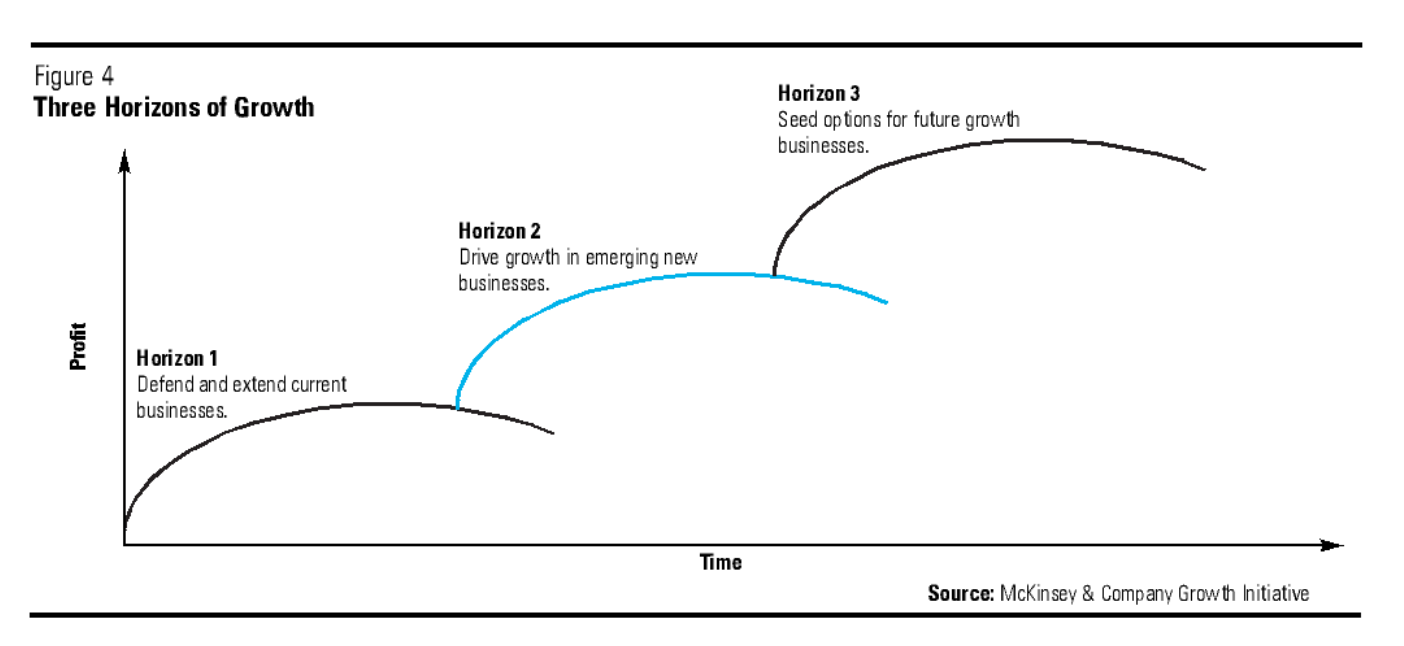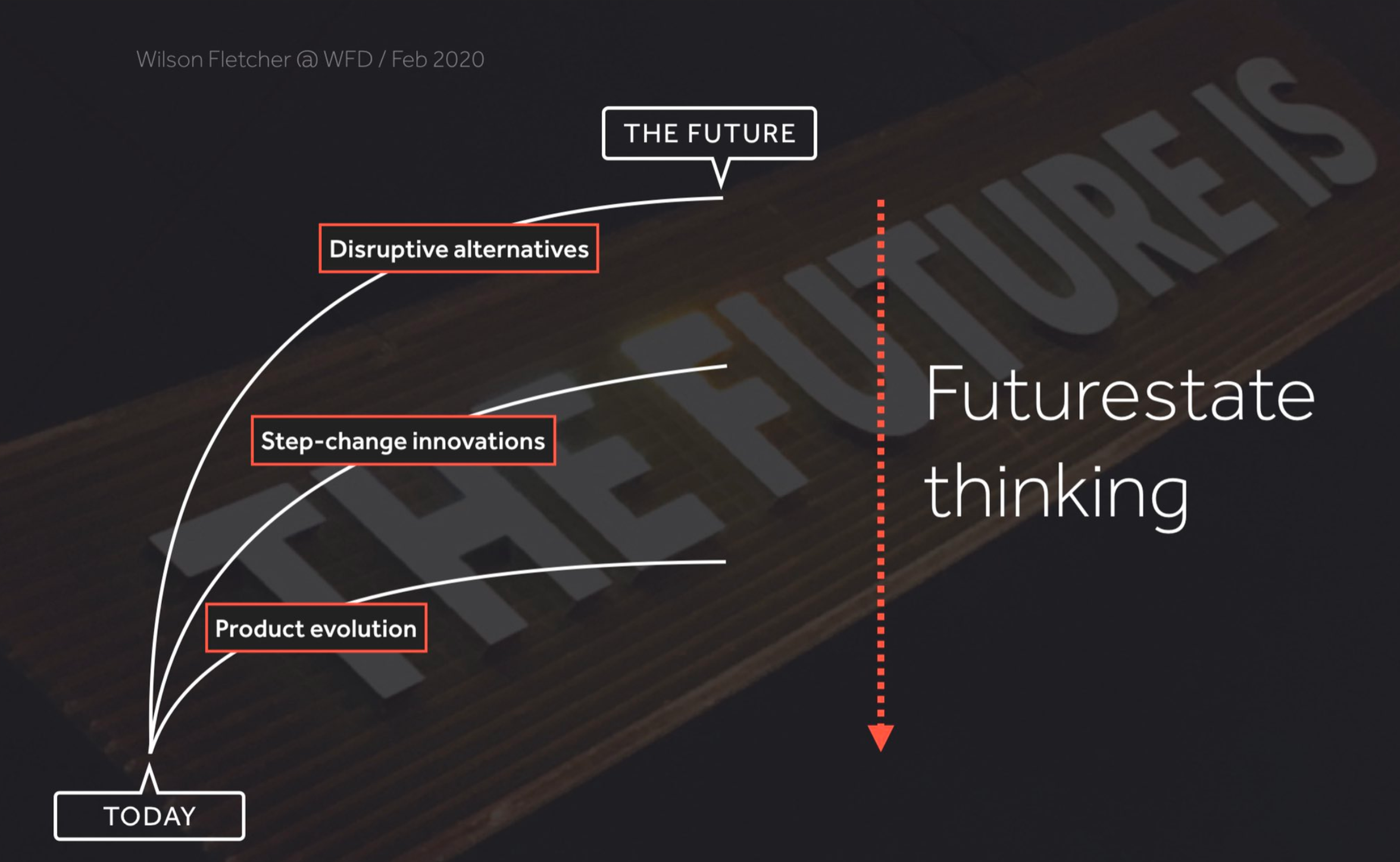Companies are terrible at trying to plan for the future.
At least according to Mark Wilson, chief executive of strategy consultancy Wilson Fletcher, who has coached companies such as Experian and BT Sport through digital transformation and has some tips on how best to think ahead.
Thinking about the present is easy, he says — there is all kinds of data, performance metrics, peer group analysis and so forth to tell you how the business is doing right now. But try to think five or 10 years out and the corporate imagination tends to run dry.
Wilson, speaking at the World Forum Disrupt Strategy and Innovation summit, said this was a problem he frequently came across with clients. Getting companies into what he called “Futurestate” thinking, he said, was hard.
Partly, he blamed the McKinsey “three horizons of growth” chart, which plots the path to the future in three consecutive arcs, from immediate product enhancements to bigger step-change and finally disruptive change, farther in the future.

Perhaps in the past change really did come in this kind of orderly sequence, but now, all three types of change could be hitting your company all at once. The image should more rightly show all three arcs stacked up on top of each other,

To avoid becoming a “caught out by change” case study like Nokia and Kodak, Wilson told the audience that companies have to become better at imagining the future. These are his tips for getting people into the right mindset.

- Don’t think about the current state of the company until you have thought about the future. No looking at spreadsheets or performance metrics. These will keep you too hooked into the present day of the company.
- Assume that customer interactions will become 100% digital in the future. They might not, in reality, but for this exercise imagine a world of permanent coronavirus quarantine where you can’t have humans meeting. How does the business work then?
- Ban yourself from thinking about you. Instead, think about what your customers need.
- Think without constraints. If someone else somewhere can do it, you can too.
- Imagine you have to compete with everyone, even companies from outside your sector. Amazon and Uber have set new benchmarks for convenience and speed, not just in online sales and taxis, but for any industry. There is simply a different expectation for customer service now, across the board.
- Get into the mindset that even the most outlandish things can and will happen. Wilson likes to show clients crazy and futuristic products that have actually been launched — for example, a Japanese holographic personal assistant (pictured below) — to show that anything is possible.

- Think about how you would put your own company out of business. Wilson said this exercise can be emotional for companies but often works as a way of unlocking thinking about change.


